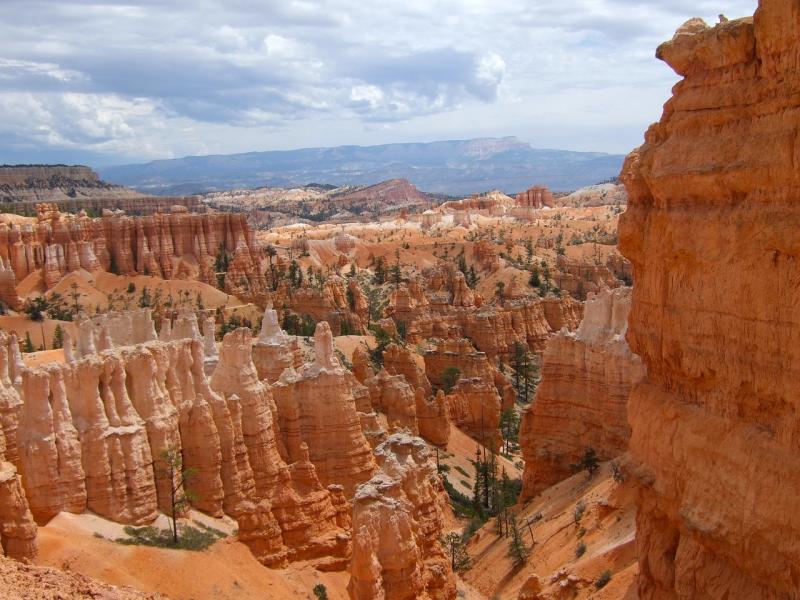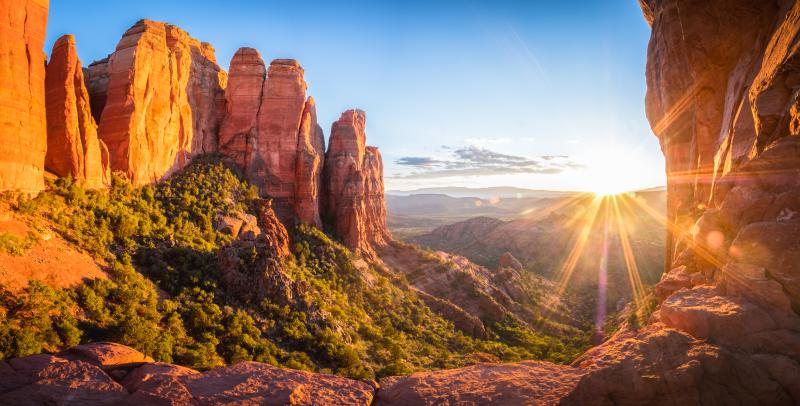View It
Visit It
Bryce Canyon
Utah
Visit Bryce Canyon
Bryce Canyon National Park, located in southern Utah, is a breathtaking expanse of geological wonders that captivates visitors with its otherworldly landscapes. Known for its unique geology, primarily the famous hoodoos—irregular columns of rock formed by erosion—the park offers a surreal vista that is both awe-inspiring and mystical. These spire-shaped rock formations, set against the backdrop of a clear blue sky, create a striking contrast with the warmth of the red, orange, and white hues of the rocks. The park's natural amphitheaters and the panoramic views from points like Bryce Point and Inspiration Point provide unforgettable sights that are both photogenic and mesmerizing.
A visit to Bryce Canyon is not just about sightseeing; it's an invitation to explore. The park offers a range of hiking trails suited for various fitness levels, from the easy Rim Trail that offers stunning views along the edge of the canyon, to the more challenging Peek-A-Boo Loop that takes you up close with the hoodoos. For an even more immersive experience, the Navajo Loop and Queen’s Garden Trail are popular choices that allow you to descend into the amphitheater and wander amongst the towering hoodoos. Each trail offers unique perspectives and photo opportunities of the intricate rock formations and the sprawling vistas beyond.
Beyond hiking, Bryce Canyon also offers other ways to experience its majestic beauty. Seasonal horseback riding tours provide a relaxed yet adventurous way to see the park from a different vantage point. Additionally, the park is renowned for its night sky visibility. With minimal light pollution, Bryce Canyon is one of the best places in the U.S. to stargaze. The park organizes regular astronomy programs that allow visitors to gaze at the stars, planets, and galaxies through telescopes, with rangers explaining the cosmic phenomena.
Visiting Bryce Canyon National Park is a journey into a landscape that feels almost like stepping onto another planet. Whether you're hiking among the hoodoos, capturing the changing light at sunrise or sunset, or enjoying the night sky brimming with stars, Bryce Canyon offers a unique blend of natural beauty, adventure, and tranquility that makes it a must-visit destination for nature lovers and outdoor enthusiasts alike.
Bryce Canyon Monthly Weather Conditions
LOW
TEMP
HIGH
TEMP
DAYS OF PRECIP.
January
9°F
31°F
11
February
10°F
31°F
8
March
20°F
42°F
8
April
26°F
56°F
12
May
36°F
70°F
8
June
42°F
79°F
11
July
42°F
83°F
11
August
42°F
83°F
8
September
31°F
70°F
8
October
27°F
57°F
9
November
18°F
47°F
8
December
9°F
37°F
5
Need to Know Before You Go To Bryce Canyon
Find your Next Adventure in Bryce Canyon
Explore Bryce Canyon
- Bryce Canyon isn't actually a canyon; it's a series of natural amphitheaters or bowls, carved into the edge of a high plateau.
- The unique spire-shaped rock formations in the park are called hoodoos.
- Bryce Canyon has one of the highest concentrations of hoodoos in the world.
- The park's elevation varies from 6,620 feet to 9,120 feet, offering diverse environments from forests to deserts.
- Despite its name, the park was named after Ebenezer Bryce, a Mormon settler, and is not technically a canyon.
- The area was originally designated as a national monument by President Warren G. Harding in 1923 and was upgraded to a national park in 1928.
- Bryce Canyon is known for its exceptional air quality and clear skies, making it an ideal spot for stargazing.
- The park is home to over 100 species of birds, dozens of species of mammals, and more than a thousand plant species.
- Native American peoples, including the Paiute, have historical ties to the land that encompasses Bryce Canyon.
- The park features a yearly winter festival known as the Bryce Canyon Winter Festival, which includes activities like cross-country ski races and archery.
Featured Picture Gallery

Bryce Canyon is Formed by Hoodoos

The Hoodoos of Bryce Canyon have been Formed by Erosion Over Time

Explore the Amazing View of Bryce Canyon National Park
Explore Similar Locations
Grand Canyon

Sedona

Zion National Park

